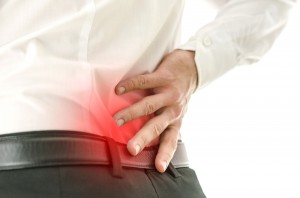Although it may seem counter-intuitive to want to exercise when you are in pain, current research suggests that physical activity is great for low  back pain. In a lot of cases, it has actually been shown to be better than bed rest! However, not all exercises are created equal and it is important that you know which exercises are beneficial and which ones may be potentially harmful.
back pain. In a lot of cases, it has actually been shown to be better than bed rest! However, not all exercises are created equal and it is important that you know which exercises are beneficial and which ones may be potentially harmful.
Are you one of the vast numbers of people suffering from low back pain? Has it begun to interfere with your work, sporting commitments or other activities of daily living?
If so, please call to arrange an appointment on 01962 861188 now. If we don’t think chiropractic is right for you, we will do our best to direct you back to your GP or another relevant health professional.
Exercise is great for both physical and psychological health. In those suffering from low back pain, exercise can help strengthen the leg, back and abdominal muscles which help to support the spine. It can also improve your cardiovascular health, help you lose weight and make you feel great!
But what types of exercises should you be doing? It is important that you discuss your options with your health care professional before participating in any activity. Generally, pain should improve slightly during exercise. If after 10-15 minutes of activity your pain is still really bad, or even worse, stop that activity.
Swimming and Pilates are often great recommendations for low back pain. If your doctor approves, take it easy to begin with and let your instructor know that you have back pain, as there may be some moves that would be best if you sat out on.
Other particularly good exercises for low back pain include:bridges, knees to chest, wall-sits, press-up back extensions and bird dog exercises. When performing these movements, make sure you maintain a ‘neutral pelvis’ position and keep your abdominal turned on the whole time.
To find your ‘neutral pelvis’ lie on your back with your knees bent and your feet flat on the floor. Rock your hip backward (so that you are maximally arching your back) and then forwards, so your back is fully pressed into the floor. Find the position halfway in between, and then tighten your stomach muscles as though preparing for a punch. This position, called the ‘neutral pelvis’ is the basis of a lot of core strengthening exercises.
For other exercises, try the following safer modifications:
- Instead of performing toe touches in a standing position, which puts a lot of strain on the spine, try stretching your hamstrings by lying on your back and looping a towel around your foot to hang onto. Hold the stretch for at least 30 seconds.
- Instead of sit-ups try a partial crunch. Sit-ups can be dangerous because a lot of people rock through their pelvis and hips to help create some momentum to get them into the sitting position. Instead, try coming just high enough that your shoulder blade leaves contact with the floor. Hold for 2 seconds at the top and repeat 8-12 times. Don’t use your arms to put pressure through your neck!
Exercise can be a fantastic therapy for low back pain. However, it is important that you know which exercises should be avoided, and which ones are recommended, and then, learn how to perform those exercises with perfect technique! If you would like to find out more about how exercise may help you with your back pain, please call to arrange an appointment at Bradford House Chiropractic Clinic on 01962 861188 now.








